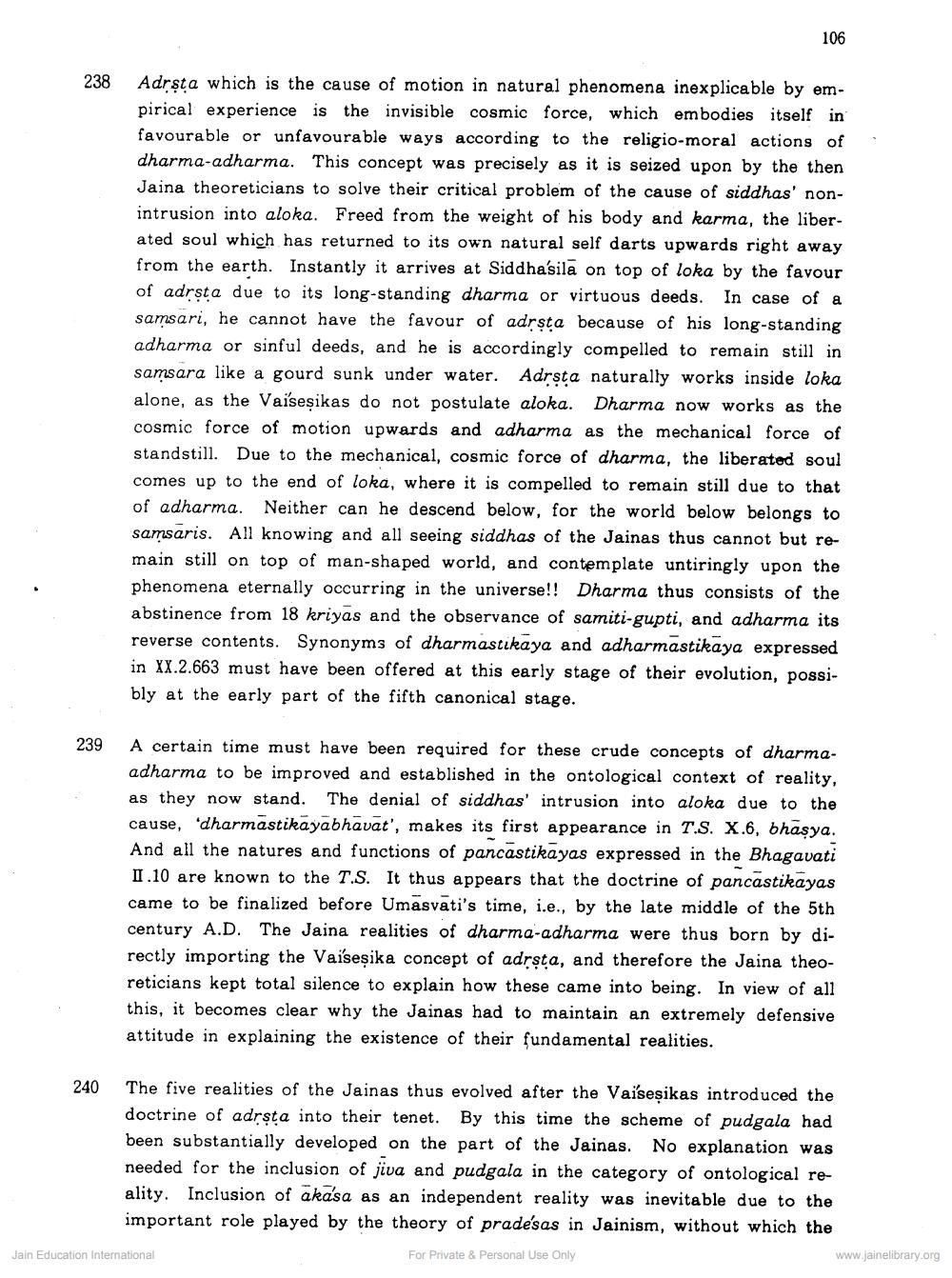________________
106
238
Adrsta which is the cause of motion in natural phenomena inexplicable by empirical experience is the invisible cosmic force, which embodies itself in favourable or unfavourable ways according to the religio-moral actions of dharma-adharma. This concept was precisely as it is seized upon by the then Jaina theoreticians to solve their critical problem of the cause of siddhas' nonintrusion into aloka. Freed from the weight of his body and karma, the liberated soul which has returned to its own natural self darts upwards right away from the earth. Instantly it arrives at Siddha'sila on top of loka by the favour of adrsta due to its long-standing dharma or virtuous deeds. In case of a samsari, he cannot have the favour of adrsta because of his long-standing adharma or sinful deeds, and he is accordingly compelled to remain still in samsara like a gourd sunk under water. Adrsta naturally works inside loka alone, as the Vaiseșikas do not postulate aloka. Dharma now works as the cosmic force of motion upwards and adharma as the mechanical force of standstill. Due to the mechanical, cosmic force of dharma, the liberated soul comes up to the end of loka, where it is compelled to remain still due to that of adharma. Neither can he descend below, for the world below belongs to samsaris. All knowing and all seeing siddhas of the Jainas thus cannot but remain still on top of man-shaped world, and contemplate untiringly upon the phenomena eternally occurring in the universe!! Dharma thus consists of the abstinence from 18 kriyas and the observance of samiti-gupti, and adharma its reverse contents. Synonyms of dharmastikaya and adharmastikaya expressed in XX.2.663 must have been offered at this early stage of their evolution, possibly at the early part of the fifth canonical stage.
239
A certain time must have been required for these crude concepts of dharmaadharma to be improved and established in the ontological context of reality, as they now stand. The denial of siddhas' intrusion into aloka due to the cause, dharmastikayabhavat', makes its first appearance in T.S. X.6, bhāsya. And all the natures and functions of pancastikayas expressed in the Bhagavati 11.10 are known to the T.S. It thus appears that the doctrine of pancastikayas came to be finalized before Umasvati's time, i.e., by the late middle of the 5th century A.D. The Jaina realities of dharma-adharma were thus born by directly importing the Vaiseșika concept of adrsta, and therefore the Jaina theoreticians kept total silence to explain how these came into being. In view of all this, it becomes clear why the Jainas had to maintain an extremely defensive attitude in explaining the existence of their fundamental realities.
240
The five realities of the Jainas thus evolved after the Vaiseșikas introduced the doctrine of adrsta into their tenet. By this time the scheme of pudgala had been substantially developed on the part of the Jainas. No explanation was needed for the inclusion of jiva and pudgala in the category of ontological reality. Inclusion of akasa as an independent reality was inevitable due to the important role played by the theory of prade'sas in Jainism, without which the For Private & Personal Use Only
www.jainelibrary.org
Jain Education International




